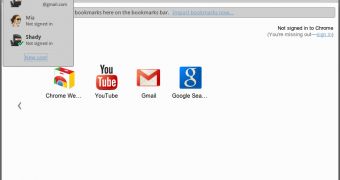Google Chrome 16 has been released to the stable channel, making it available to the hundreds of millions of people using it around the world. The big new feature in the latest Chrome release is support for multiple profiles.
Just as your computer can have multiple users, so does Chrome now. The idea is to make it easy for people to share the browser, without all of their bookmarks, preferences, history, apps and so on, getting mixed up.
There already is a way of doing this, by creating several users on your computer, but that is somewhat of a bigger hassle.
With multiple profiles in Chrome, you can switch users in seconds with only a couple of clicks. What's more, you can run different browser windows under different profiles, a very useful feature for many people.
The multiple profile feature in Chrome also has the advantage of syncing data for all profiles separately, in different Google accounts.
"If you’ve used Chrome for awhile, you know that it fits you better and better over time—it just wouldn’t be your Chrome without your favorite bookmarks, apps, extensions, history, and other settings," Tim Steele, a software engineer at Google, wrote.
"Signing in to Chrome lets you take your Chrome stuff with you, so you can always have your personal Chrome experience on all of your devices," he said.
"With today’s Stable channel release, you can now add new users to Chrome. Adding new users lets you each have your own personal Chrome experience, and lets you each sign in to Chrome to sync your stuff," he announced.
To add a new user, go the Wrench menu, Options/Preferences > Personal Stuff and click on the "Add new user button."
Multiple profiles are not linked to Chrome sync directly. That is, you can create new profiles that aren't signed in any Google account. This actually comes in very useful if you want a clean experience, for example, to see how Google search results differ when you're logged in and when you're not.

 14 DAY TRIAL //
14 DAY TRIAL // 